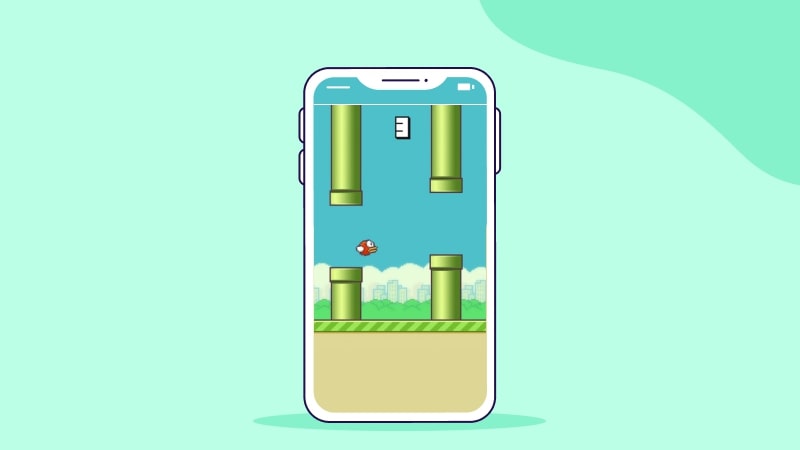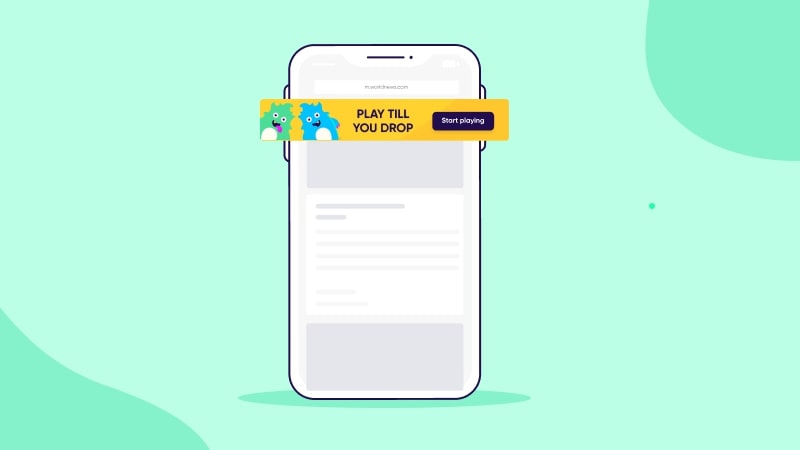Easy Playing Apps Design Casual
Hyper casual games were the second fastest-growing app genre in H1 of 2021, rising 60% compared to the previous year.
But what is it about hyper casual games that enables such impressive growth? What's the magic ingredient that helps these games scale?
Let's just say that phrases like keep it simple stupid and less is more carry plenty of weight here.
In this blog we'll discuss these key characteristics and various game mechanics, as well as global trends, monetization methods, and best practices. In short, everything you need to know about hyper casual games.
Are you ready? Set? Let's go!
What are hyper casual games
Hyper casual games are simple in mechanics, design, and concept.
There are a number of key ingredients that make up their secret sauce to success – let's take a look at the recipe.
Instant
Hyper casual games require little or no tutorial, meaning they are instantly playable. The user is immediately immersed into the game and can follow the flow of the game in seconds.
Minimalistic
The user interface of a hyper casual game is simple and minimalist. The mechanics are also minimalistic and there aren't a lot of bells and whistles – no fancy controllers, elements or complicated menus to get to grips with.
Minimalist design means a user has to invest little to no effort at all to get going. . Hyper casual games can be played while you're on the train to work or even while watching TV, and are designed to help the user switch off.
Engaging
Hyper casual games are not only instantly playable, but infinitely replayable. The short and simple game mechanics mean you want to play them over and over again.

Switchable
The flip side of the simplicity is that hyper casual games do tend to have a shorter shelf life than other genres. Don't despair, because their simplicity also means users can move on to the next game with ease. If as a game developer you notice that engagement is dropping then you can cross promote and direct them towards your new game.
Easy to develop
Due to their simple design and mechanics, hyper casual games are easy to develop and launch. Unlike other genres where a new game can take months to develop, hyper casual games can be created and launched in a matter of days. The reason for this is that hyper casual games are based on a mechanic and not a plot, making the conceptualization and prototyping stages much simpler and shorter.
Monetization model
Due to their simple gameplay, hyper casual games rely heavily or even exclusively on in-app advertising (IAA) as a revenue stream. We will discuss more on this later.
Get the latest marketing news and expert insights delivered to your inbox
The history of hyper casual games
The first known hyper casual game was Flappy Bird, developed by Dong Nguyen, and released in 2013. The game didn't receive much attention at first and it wasn't until the following year that it exploded and started to experience massive scale. At its peak, Flappy Bird was making $50,000 a day from in-app ads.
This made other app developers sit up and notice. With relatively low barriers to entry (thanks to the simple game design), it didn't take long for others to follow suit.
Yet, it wasn't until 2017 that the term "Hyper casual" was coined in an article by Johannes Heinze called "The Ascendance of Hyper-casual", where he defined the main features of hyper casual games as we know them today.
The hyper casual genre has seen massive growth in recent years, easily commanding 10 of the top 15 spots in the download charts.
Hyper casual game mechanics
There are a number of different types of hyper casual games, and naturally each one has its own mechanics. Let's take a look at how they work.
Puzzle
In their simplest form the player performs an action or a sequence of actions to solve the puzzle, for example by aiming or swiping. In hyper casual games, the puzzles are easy and the player should be able to solve them in a minute or less.
Agility
Agility games, such as pac-man or Tiles Hop are all about hand-eye coordination. The player may have to dodge obstacles and collect coins or prizes. The difficulty increases with each level requiring the player to have more precise agility.
Timing
Timing games require the player to race themselves and reach the goal within the allotted time. Similar to agility games, the player needs to use precision to reach the target. They may also need to collect bonuses or avoid obstacles along the way. An example of a timing game is Fun Race 3D.
Swerve

Swerve mechanics have a player on a track where they have to move or avoid obstacles or oncoming hazards. The gameplay is fast paced keeping the user highly engaged and entertained. Swerve games include Aqua park or Flappy Birds.
Stacking
Stacking mechanics have objects that fall from the top of the screen and require the player to slot them into the right place. The classic example is Tetris, but other stacking games include Full Cat.
Monetization methods
The vast majority of hyper casual games are free to download and play, so how do developers make their money?
In-app advertising

We mentioned above that hyper casual games are simple in mechanics and have a short player life cycle, making it harder for app owners to monetize via IAP. That being said, hyper casual games are able to scale quickly, achieving high daily download rates. In hyper casual, scale is key because margins are thin.
IAA is the easiest and arguably best way to capitalize on the growing number of users. So much so that according to get social, 97-99% of revenue in hyper casual games comes from IAA.
In-app purchases
Although highly uncommon, There is still money to be made for IAP. There is a small group of users who want to unlock additional levels, buy more lives, or experience enhanced features that the free version doesn't offer.
One such example is Homa Games, who offer a VIP subscription to their free to download, hyper casual game, Sky Roller where players roller skate for fun.
In-app measurement

In order to ensure your app remains profitable there are a number of key metrics to measure to keep track of success:
IPM stands for Installs per Mille, which simply put is the number of times your game was installed for every one thousand ad impressions.
IPM is one of the most, if not THE most important metric for hyper casual app owners as it helps to understand if your user acquisition (UA) strategy is working and if there is scope for scale.
Furthermore, having a high IPM can help improve your ad ranking which will help bring down your cost per click (CPC), allowing more budget for your campaigns and hence scaling your UA even further.
ARPU or Average Revenue Per User is another key metric as it helps to understand the worth of an individual gamer, or the average among a cohort of gamers. Having made this calculation you can then identify which sources or campaigns helped bring the highest value users and invest more resources into those channels.
CPM which is the Cost per Mille is a payment model that many gaming publishers use. It refers to the cost of every thousand impressions served and is often pre-determined before a campaign. eCPM which is the effective Cost per Mille calculates how much revenue de fato a publisher earns per thousand impressions.
Since in-app advertising is the primary monetization method for many hyper casual app owners we can see why CPM and eCPM are so vital.
Guide
Gaming app marketing in iOS 14+ & SKAdNetwork
Download now
The COVID-19 effect
In March of 2020 the world went into lockdown following the outbreak of the coronavirus pandemic. People were asked to stay home and keep social distance. Many found themselves with spare time on their hands and turned to gaming to relieve some of the boredom and help take their minds off the troublesome news.
The impact on gaming apps was huge, with the total number of installs surging 90% in hyper casual games compared to the previous year.
Gaming app marketers jumped on this opportunity and put a strong focus on UA campaigns, with non-organic installs leaping 250%.
In the following graph we can see that while there was an initial spike in March of 2020, the real growth took place later in the year and has continued into the first half of 2021.
We can see that the pandemic acted as a catalyst, introducing scores of new players to mobile. Indeed, there's also a 'new normal' 'in Hyper Casual gaming.
The iOS 14 effect
2020 wasn't done with shake-ups.
In June of 2020 Apple announced its intention to introduce its AppTrackingTransparency (ATT) framework that came into effect in April 2021. This meant that post iOS 14, app owners were required to ask users to opt-in to sharing their unique identifier (IDFA).
These changes meant user-level data – something that has been heavily relied upon, particularly in gaming app marketing – was suddenly limited.
Initially there was concern that delivering accurate and targeted advertising, crucial for data-driven user acquisition, cross promotion, and monetization, would be much more challenging and could put profitability at risk. However, these fears have been mostly alleviated as hyper casual games have proved to be resilient in the face of iOS 14, trading on their mass appeal, high install rates, revenue from IAA, and short shelf life.
We now know that with innovative solutions, such as aggregated data, and predictive analytics, challenges pertaining to targeted advertising can be overcome.
Another knock on effect from iOS 14 saw larger gaming studios buying smaller independent ones, with hyper casual proving particularly popular.
Why? Well, acquisitions not only expand the catalogue of games and their revenue, but also the user base, meaning access to additional and fresh 1st party data. The larger gaming studios are then able to cross promote games via Apple's ID for vendors (IDFV), which is a code for vendors that uniquely identifies individual devices engaging with an app.

A key factor here is scale, which is something hyper casual studios have in their favor. So even if you're a larger studio focused more on casual or even midcore games, buying a hyper casual studio can still prove to be extremely lucrative. It is a form of user acquisition.
The larger studios can then utilize marketing automation tools to smartly segment the audience and offer personalized engagement, thereby mitigating some of the challenges that iOS 14 poses.
Tips on how to boost revenue
As discussed above, the vast majority of revenue for hyper casual games comes from in-app advertising. In fact, 82% of mobile gamers prefer a free mobile game with ads to a paid mobile game without. But how can advertisers maximize the potential here to boost their bottom line?
Cross promotion
It sounds counterintuitive, why would you encourage a user to transfer to another game? Well, if you know a user enjoyed your game there is a high chance they will enjoy a similar game, especially if a user is likely at the end of the playing life span of one game
Cross promotion plays a key role in sustaining the hyper casual ecosystem, sharing gamer traffic and allowing both publishers and advertisers to tap into existing pockets of already engaged users. Think of it like Netflix recommending a show under the banner, "Because you watched".
Cross promotion works. And of course, it's free. Take the example of Amanotes who invested in a unified cross promotion platform.
Leveraging rewarded video ads to boost engagement
Rewarded videos offer coins, extra lives, or in-app currency as a prize for watching a video. They are usually not skippable and so are a great way to increase session length.
It is more challenging to incorporate rewarded videos into the flow of the game and so developers need to think of creative ways to encourage gamers to watch rewarded videos. They are, as a result, completely user initiated. In fact 74% of mobile gamers in the US said they would watch an in-game ad if they got an in-app perk in return. They can also help boost retention by, for example, increasing the reward for each consecutive day that a user watches a video.

Banner ads are widely used in hyper casual games because they can be displayed within the game at the top or bottom of the screen and don't distract too much from the gameplay. As CPM is the most widely used monetization method, including banners is the simplest way to rack up impressions without disrupting the flow of the game.
Deliver interstitial ads carefully to maintain a positive UX
Interstitial ads are similar to a pop-up and take up the entire screen. They usually appear at transition points within the game, like before the game starts or between levels.
Advertisers need to strike a delicate balance between hitting their revenue targets and not over advertising which may irritate gamers and lead to churn.
Key takeaways
Hyper casual games have seen massive growth since their inception and now command many of the top spots in the download charts. Let's recap some of the key points to remember.
- Hyper casual games are simple and minimalist. They are instantly playable and highly engaging.
- Due to their simple gameplay, players churn easily. Hyper casual games make up for the high player turnover by scaling quickly and utilizing in-app advertising as their primary revenue stream, and driving users to play their next title with cross-promotion.
- COVID-19 had a profound influence on playing trends, with a YoY 90% rise in install rates, and a significant increase into a new normal with scores of players who started playing during the 1st lockdowns and never stopped.
- Privacy changes have led to a surging wave of M&A in gaming as a way to increase large studios' 1st party data that can be leveraged across a company's apps
- As IAA is the primary revenue stream with thin margins, success is dependent on scale and maximizing a mix of ad formats such as rewarded videos, interstitials, and banner ads.
Easy Playing Apps Design Casual
Source: https://www.appsflyer.com/blog/mobile-marketing/hyper-casual-games/
Posted by: monroewhithre1978.blogspot.com

0 Response to "Easy Playing Apps Design Casual"
Post a Comment